The 23 most influential figures in Texas Tech's sports history
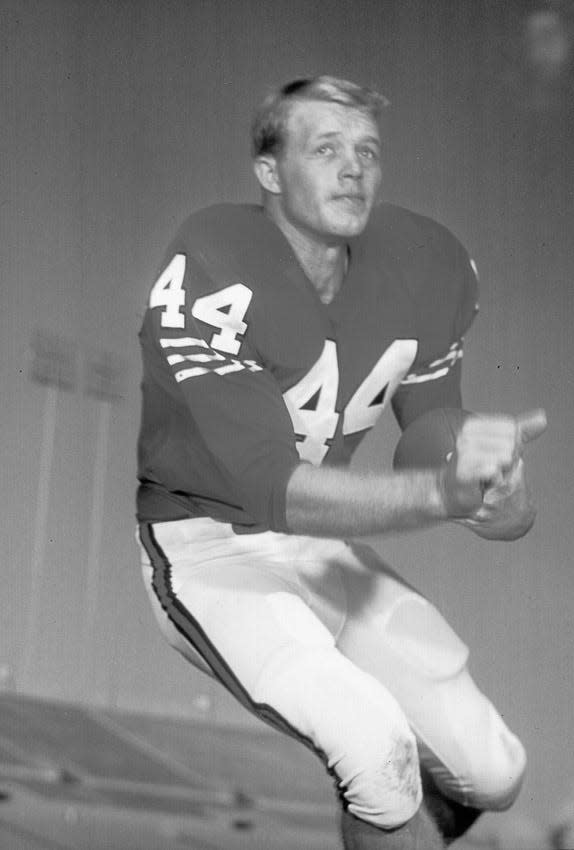
- Oops!Something went wrong.Please try again later.
- Oops!Something went wrong.Please try again later.
Selecting the 23 most influential figures to the history of Texas Tech sports is no easy task. For one thing, it's subjective. For another, there are a century's worth of people to consider.
The following, alphabetized list was not designed to be a who's who of Tech's greatest athletes and coaches, though some great athletes and coaches are included. Instead, a summary of individuals whose contributions were important to what Red Raiders and Lady Raiders sports have become.
Donny Anderson: With equal parts athletic talent and dashing good looks, Anderson was a perfect hero for the time. During its early years in the Southwest Conference, Tech hitched its football fortunes to Anderson, a do-it-all star on Saturday afternoons and evenings at Jones Stadium. He represented Tech for nine years in the NFL, being part of the Green Bay Packers' championship teams in Super Bowls I and II, and now nearing 80, he still returns to Lubbock for Tech functions.
Lt. Gov. Bob Bullock: He never played sports or coached at Texas Tech, but Bullock got a bachelor's degree from the university. And in 1994, when Southwest Conference members were lobbying for inclusion in the new Big 12, the powerful lieutenant governor of Texas demanded of leaders from Texas A&M and Texas that Tech and Baylor not be left behind. John Montford, the former state senator and Tech chancellor, was present in Bullock's office when it happened. "He said, 'I don't give a damn which conference A&M and UT go to as long as you take Baylor and Texas Tech with you,' " Montford said, "and sort of the feeling was that they weren't going to be in really good shape in the next round of budgets if they didn't obey."
Pete Cawthon: Mike Leach won more football games at Texas Tech, but Cawthon won a little more frequently, still holding the program record for winning percentage by going 76-32-6 from 1930-40. Like Leach, Cawthon was a character who butted heads with the Tech administration, in his case, over scheduling. After the Southwest Conference repeatedly voted down Tech's attempts at membership, Cawthon reworked the schedule to play as few Texas schools as possible and send the Red Raiders all over the country. Among his friends was legendary Notre Dame coach Pete Cawthon. When Cawthon died in 1962, The Associated Press obituary called him "one of Texas' best-known and most colorful collegiate football coaches."
Jack Dale: While doing Texas Tech basketball, Southwest Conference or Big 12 football or Lubbock sports talk, Dale was a fixture on Lubbock radio airwaves from 1952 until shortly before his death in 2011. In the many years before most or all Texas Tech games were televised, he was the voice of the Red Raiders for generations.

J. William Davis: He didn't coach at Texas Tech nor play for the Red Raiders, but as chairman of the Tech Athletic Council from 1948-69, Davis was a mover and a shaker off the field. He's best known for developing the letter of intent, the program still used today that formalizes the agreement between a recruit and the school he or she chooses. Davis also served terms as president of both the Border Conference and the Southwest Conference and vice president of the NCAA. He was one of the leaders who helped Tech gain admission to the SWC in 1956 after other members had rejected Tech in 1927, 1929, 1931 and 1952.
Joe Kirk Fulton: Saddle Tramps founder Arch Lamb and George Tate came up with the idea of a Masked Rider for Tech football games in 1936 with Tate as the rider. The practice didn't really take hold and become Tech tradition, though, until the Gator Bowl at the end of the 1953 season. Tech coach DeWitt Weaver asked Fulton to do the honor, and the latter is generally credited as being the first official Masked Rider, a tradition that carries on today. Tech had college football's first live horse mascot, and schools such as Southern California and Florida State followed suit.
Danny Hardaway: Hardaway broke the color barrier in Texas Tech sports when he became the first African-American to sign with the Red Raiders on scholarship in February 1967. He was on campus from 1967 into 1971, playing receiver and running back and earning letters for the 1969 and 1970 seasons. Hardaway, who had come to Tech from Lawton (Okla.) High School, transferred back home to Cameron for his last year. By 1973, Tech's 11-1 Gator Bowl champions had about a dozen Black players, four of whom made all-Southwest Conference.
Larry Hays: Current coach Tim Tadlock has elevated the Texas Tech baseball program with its first four trips to the College World Series. But the Tech coach for whom Tadlock played raised the standards and expectations significantly. Under Hays, the Red Raiders made the NCAA postseason eight times in nine years from 1995 to 2004, and although those teams never advanced to Omaha, they brought new excitement to Dan Law Field. Hays' teams won 813 games from 1987 through 2008 with 11 seasons of 40 or more victories.
Kirby Hocutt: In Hocutt's 12 years as athletics director, Tech teams have won 14 Big 12 championships and the program's first NCAA championship by a men's team, the latter by the 2019 track and field squad. The Red Raiders have experienced some of their most broad-based success ever in recent years with top-eight national finishes from its men's basketball, baseball, golf and track and field teams and it's women's tennis and track and field teams. Also during Hocutt's tenure, Tech has taken in more than $400 million in donor contributions to athletics, allowing a continued investment into new sports facilities.
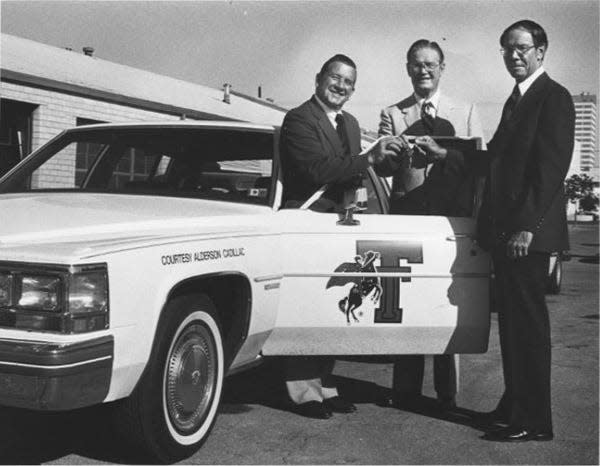
Leete Jackson Jr.: Jackson was the chief fundraiser for Texas Tech athletics for nearly three decades, becoming the Red Raider Club's first paid employee in 1958 and continuing his stewardship until 1986 as executive vice president. He drove the Red Raider Club car all over — to road games, parking it prominently at other stadiums, and to West Texas communities for fundraising events. By the time Jackson retired, he had grown the Red Raider Club to 27 chapters and was consulted by about 25 other college athletic departments looking to organize their own fundraising organizations.
Clifford B. Jones: The Texas Tech president from 1939-44 and his wife Audrey are the namesakes of Jones Stadium, which was dedicated in November 1947. Reports at the time credited Jones with contributing $100,000 (more than $1.5 million in today's dollars) toward the estimated $400,000 cost. Another Jones donation of $75,000 allowed Tech to expand the stadium to 47,000 in 1972. When Jones died that year, athletics director JT King said, "He was a great man for athletics, and a I hope Jones Stadium will always be a memorial to both him and his wife."
JT King: How does a coach who went 44-45-3 at Tech make this list? Remember that King's tenure from 1961-69 came as Tech was stepping up from the Border Conference to the powerful Southwest Conference and that the Red Raiders had gone 14-34-2 in five losing seasons before he took over. Despite those obstacles, King delivered entertaining offensive teams and finished .500 or better in six of his last seven seasons. Tech quarterback John Scovell's triple-option wizardry in a 1967 upset of Texas accelerated the Longhorns' move to the wishbone, Darrell Royal said. Then, as Tech athletics director from 1970-78, King hired coaches Jim Carlen and Steve Sloan, who produced one of the best decades in the program's history.
Mike Leach: When Leach died in December, The Associated Press national college football writer Ralph D. Russo began the obituary: "Gruff, pioneering and unfiltered, Mississippi State's Mike Leach was one of the most influential football coaches of this or any generation." Of Leach's 158 career victories, a school-record 84 came during his decade leading the Red Raiders. His influence on spread-passing offensive football lives on through a vast coaching tree that includes Lincoln Riley at Southern California, Sonny Dykes at TCU, Josh Heupel at Tennessee and Kliff Kingsbury, late of the Arizona Cardinals.
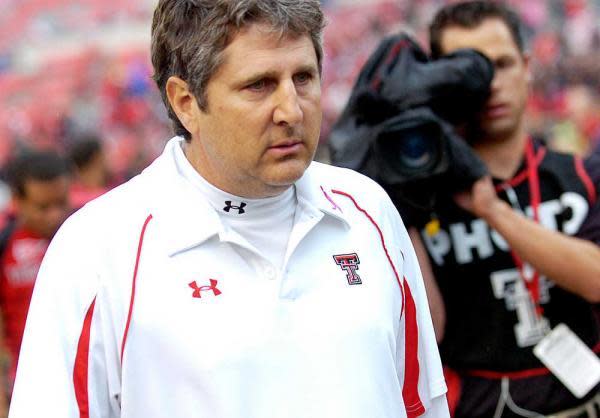
Lisa Love: The Arlington Houston graduate is credited with being Texas Tech athletics' first female scholarship recipient after Title IX legislation was enacted. She helped the volleyball team go 141-42-1 in the AIAW during her career from 1974-77, earning all-region recognition as a senior. She went on to go 404-171 with 13 NCAA tournament appearances as head coach at UT-Arlington (1982-88) and Southern California (1989-98), then became an administrator at USC (1991-2005) and athletics director at Arizona State (2005-12).
Patrick Mahomes: In five seasons as the Kansas City Chiefs' starting quarterback, Mahomes has been selected to the Pro Bowl five times and won league and Super Bowl MVP awards. He's made all the right moves on the field and, in the eyes of most Texas Tech fans, off the field, too. He continues to be an ambassador for his alma mater, regularly voicing his support for Red Raiders teams on social media.
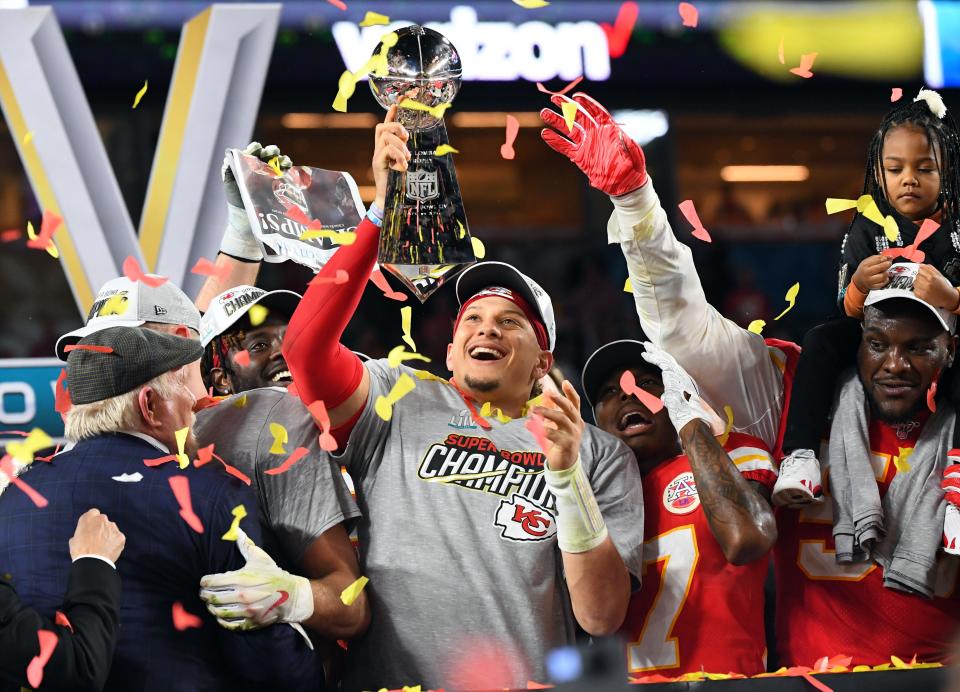
Jeannine McHaney: During the time Title IX legislation was being implemented in college athletics departments, Texas Tech established a women's athletics department with McHaney named its first director in 1975. She spent the next nearly two decades working on behalf of female athletes and coaches. Former coach and athletics director Gerald Myers called McHaney "the most influential figure in the development of the women’s athletic program at Texas Tech." She hired Marsha Sharp and lived long enough to see the Lady Raiders win the NCAA title in 1993, about 18 months before she died from cancer at age 50.
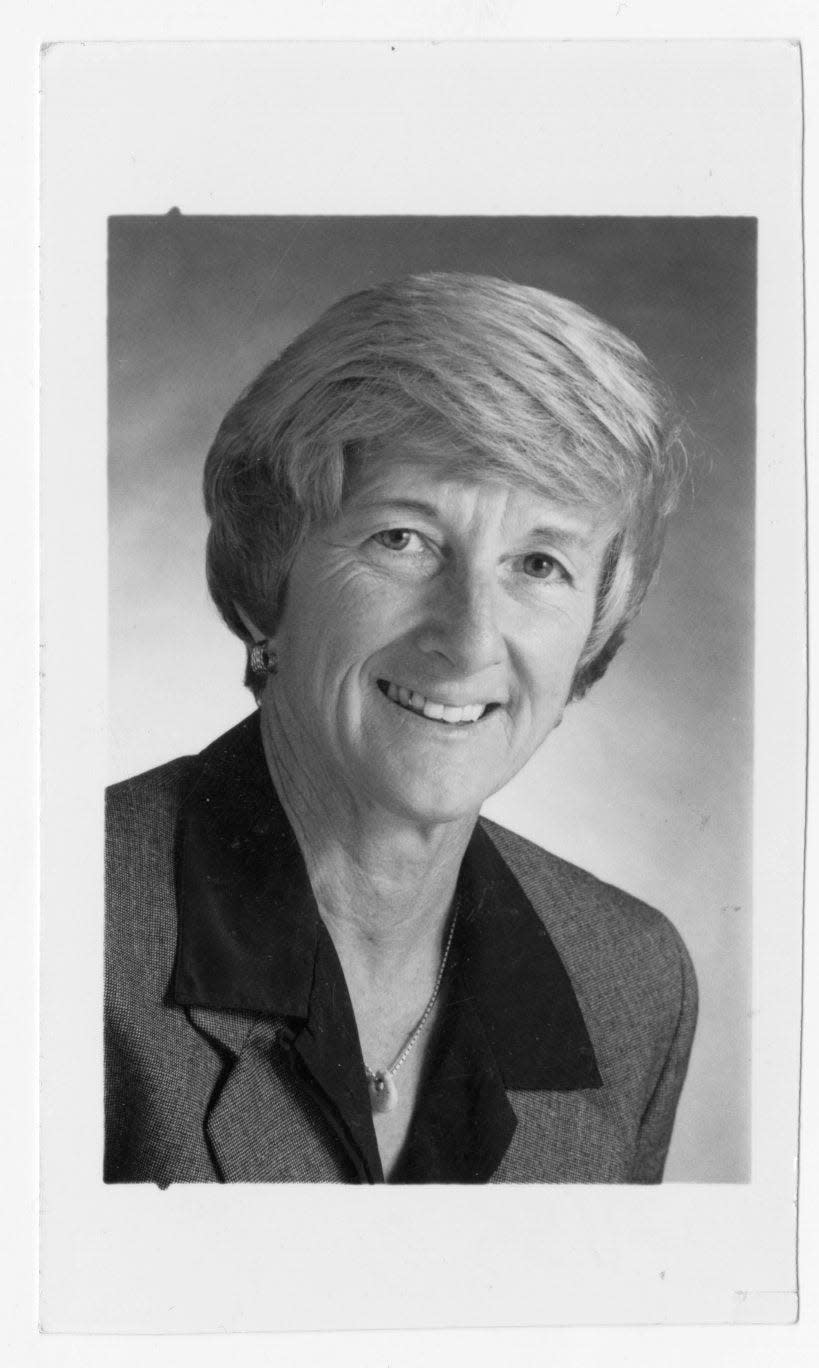
Gerald Myers: Myers has been associated with Texas Tech almost from the time he left Borger High School. He was a Red Raiders basketball player from 1955-59, a Tech coach from 1970-91, an assistant athletics director from 1991-96 and the AD from 1996 to 2011. He won Southwest Conference coach of the year recognition five times while leading the Red Raiders to two SWC regular-season championships and three SWC tournament titles. As AD, he was in charge of Tech athletics when the Red Raiders moved into the Big 12 and oversaw a facilities boom that included the opening of United Supermarkets Arena, the Rawls Course, the McLeod Tennis Center, the John Walker Soccer Complex and Rocky Johnson Field.
Collier Parris: Texas Tech sports teams have been known as the Red Raiders for 90 years, thanks to the Avalanche-Journal sportswriter who began referring to them as such in his coverage. The first reference to the nickname came in November 1932. Tech teams were officially the Matadors at the time, but football coach Pete Cawthon, appalled after seeing the gore of an actual bullfight in 1936, embraced Parris's nickname and it soon became the accepted term.
Burle Pettit: A product of the heyday of newspaper sportswriters, Pettit spent 40 years in the Avalanche-Journal newsroom, beginning in 1960 and covering Texas Tech sports throughout that decade and into the 1970s. He served stints as president of the Texas Sports Writers Association, the Texas Associated Press Managing Editors Association and the Football Writers Association of America. When the Coaches All-America Game failed to gain much traction in Buffalo and Atlanta, Pettit was a media advocate for Lubbock, and Jones Stadium hosted the summer showcase of the previous year's top college seniors from 1970-76.
Marsha Sharp: High standards for girls' and women's basketball in West Texas had already been established by the Hutcherson Flying Queens of Wayland Baptist beginning in the late 1940s. Sharp, her own basketball roots planted at Wayland, elevated the standards at Texas Tech, winning or sharing eight conference championships, reaching the NCAA Tournament 16 times and winning the school's first national title in 1993. Attendance exploded for Lady Raiders games at Municipal Coliseum and United Supermarkets Arena, making an incalculable impact on a generation of sports-minded young women across the South Plains.
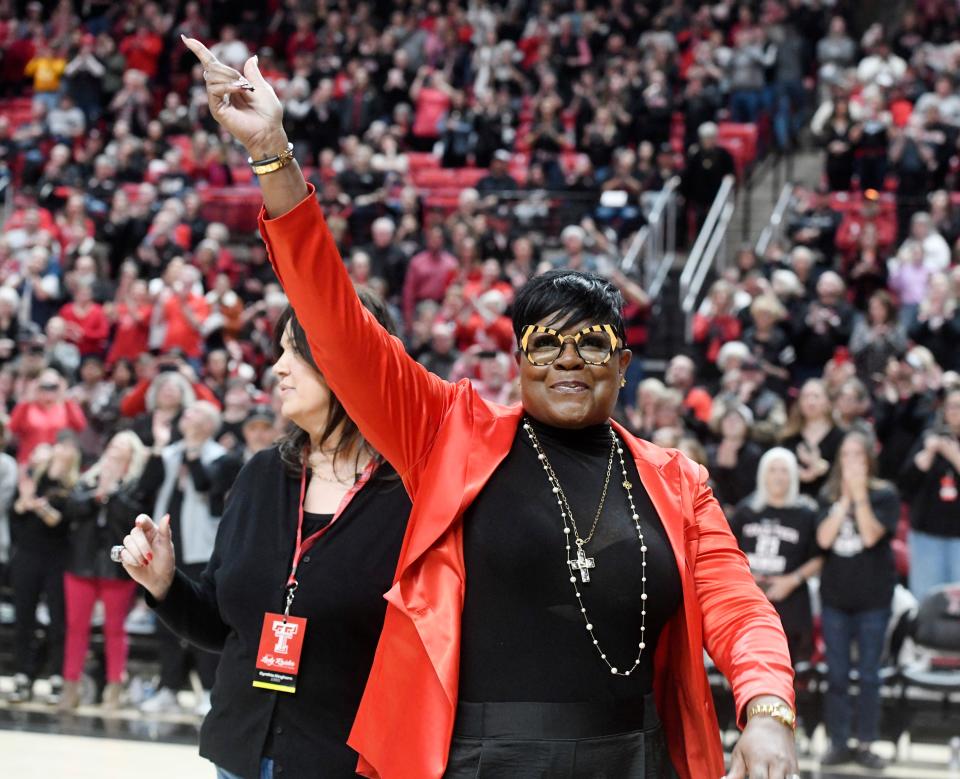
Sheryl Swoopes: The former Brownfield, South Plains College and Texas Tech star elevated the profile of women's basketball during her four seasons in college and 12 years in the WNBA, ultimately being selected to the Naismith Memorial Basketball Hall of Fame and the Women's Basketball Hall of Fame. She was named The Associated Press female athlete of the year in 1993 after leading the Lady Raiders to the national championship, then became a three-time Olympic gold medalist, a three-time WNBA MVP and a seven-time all-WNBA first- or second-team honoree.
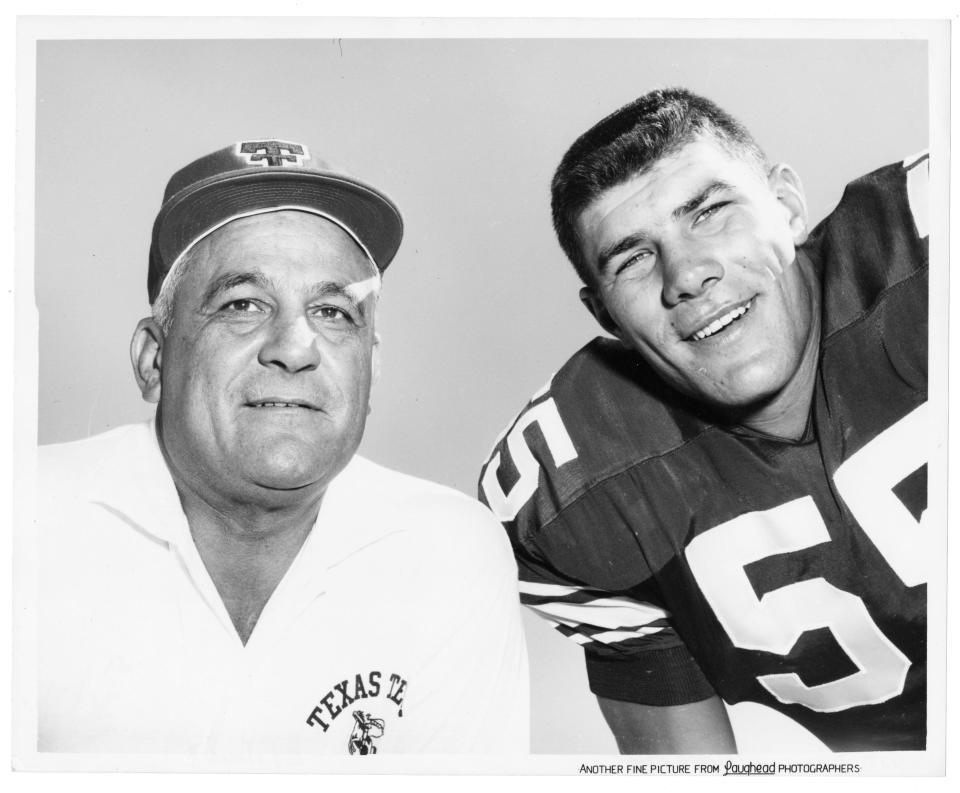
DeWitt Weaver: The most important day in Texas Tech sports history was arguably May 12, 1956, when Southwest Conference members voted to admit the Red Raiders. It was Tech's gateway to big-time college sports. Weaver was Tech's football coach and athletics director at the time, and A-J sportswriter Joe Kelly said Weaver was most responsible. "It was a team triumph," Kelly wrote, " ... but it was Weaver who engineered the entire thing. Credit belongs to him." Though his coaching tenure tailed off, Weaver's first five teams won four Border Conference titles and played in three bowl games.
Dirk West: The Avalanche-Journal cartoonist designed Raider Red, but won a legion of followers all over Texas with his sketches of Southwest Conference mascots and coaches. His single-frame cartoons first appeared on the A-J's pages in September 1964 and rapidly became an eagerly anticipated feature of the sports section.
This article originally appeared on Lubbock Avalanche-Journal: The 23 most influential figures in Texas Tech's sports history

